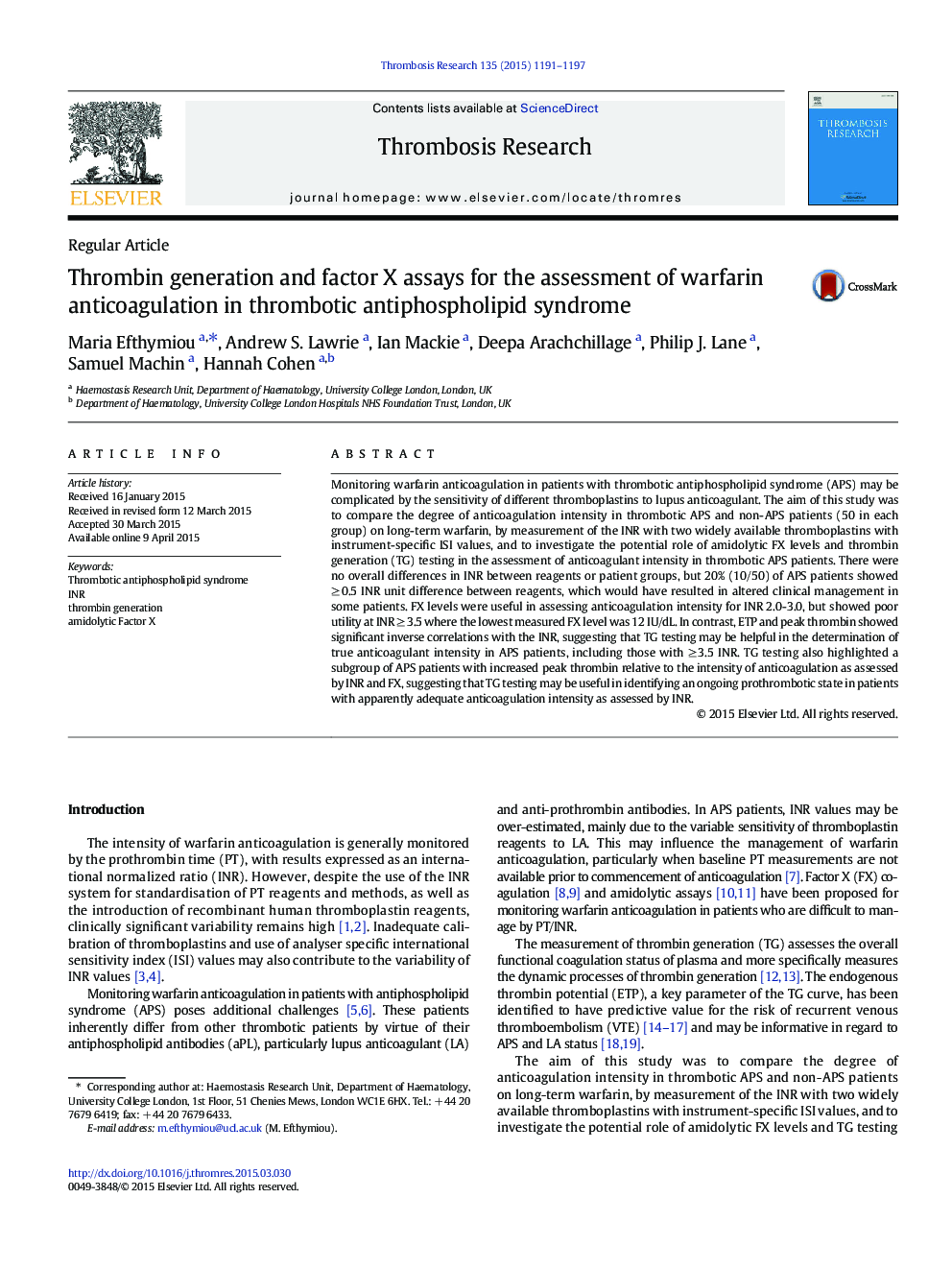| کد مقاله | کد نشریه | سال انتشار | مقاله انگلیسی | نسخه تمام متن |
|---|---|---|---|---|
| 6001836 | 1182957 | 2015 | 7 صفحه PDF | دانلود رایگان |

- INR, FX assay and thrombin generation (TG) studied in thrombotic APS
- 20% of APS patients had discordant INR values between PT reagents
- Amidolytic FX assay showed poor utility in samples with INR â¥Â 3.5
- ETP and peak thrombin correlated with the INR at all INR values
- TG suggested hypercoagulability in a subgroup of APS patients within target INR range
Monitoring warfarin anticoagulation in patients with thrombotic antiphospholipid syndrome (APS) may be complicated by the sensitivity of different thromboplastins to lupus anticoagulant. The aim of this study was to compare the degree of anticoagulation intensity in thrombotic APS and non-APS patients (50 in each group) on long-term warfarin, by measurement of the INR with two widely available thromboplastins with instrument-specific ISI values, and to investigate the potential role of amidolytic FX levels and thrombin generation (TG) testing in the assessment of anticoagulant intensity in thrombotic APS patients. There were no overall differences in INR between reagents or patient groups, but 20% (10/50) of APS patients showed â¥Â 0.5 INR unit difference between reagents, which would have resulted in altered clinical management in some patients. FX levels were useful in assessing anticoagulation intensity for INR 2.0-3.0, but showed poor utility at INR â¥Â 3.5 where the lowest measured FX level was 12 IU/dL. In contrast, ETP and peak thrombin showed significant inverse correlations with the INR, suggesting that TG testing may be helpful in the determination of true anticoagulant intensity in APS patients, including those with â¥Â 3.5 INR. TG testing also highlighted a subgroup of APS patients with increased peak thrombin relative to the intensity of anticoagulation as assessed by INR and FX, suggesting that TG testing may be useful in identifying an ongoing prothrombotic state in patients with apparently adequate anticoagulation intensity as assessed by INR.
Journal: Thrombosis Research - Volume 135, Issue 6, June 2015, Pages 1191-1197